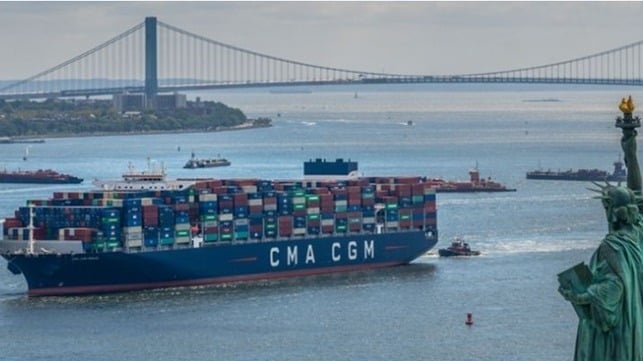Tentative Agreement in ILA Strike as Vessels Choose to “Wait it Out”

Late on the third day of the International Longshoremen’s Association strike that suspending operations at 36 U.S. East and Gulf Coast container and RoRo ports, a tentative agreement was reached settling the wage dispute but leaving the other elements open for negotiation. The agreement to restart port operations came as pressure continued to grow on both sides to resolve the dispute. Possibly encouraged by the rumors of movement, carriers let vessels pile up outside the ports.
In a joint announcement Thursday evening, the ILA and the U.S. Maritime Alliance said the tentative agreement is on the wage portion of the Master Contract. They also agreed to extend the Master Contract until January 15, 2025, so that they could return to the bargaining table to negotiate all other outstanding issues. Effective immediately, all current job actions will cease and all work covered by the Master Contract will resume. Unconfirmed reports from Reuters said the tentative agreement is for an approximately 62 percent wage increase over the six-year term of the Master Contract.
Earlier in the day, both sides in the strike appeared surprised by the vitriolic response with massive negative media and social media responses and comments vilifying union leadership and the CEOs of the shipping companies. At the same time, the pressure continued to build from industry and political leaders. The Biden administration came out strongly in favor of the ILA pressing the employers represented by the U.S. Maritime Alliance to raise its wage offer.
With rumors swirling in the industry reporters asked President Joe Biden about what was being done. Acting Labor Secretary Julie Su has said she is spending many hours on the telephone and in meetings with the ILA acknowledging she had been “opening doors.”
Biden on Thursday said without explaining he thought they were “making progress.” He said we would know “soon.” Biden in his public statements put pressure on the USMX to raise the wage offer and to recognize the vital contribution of the dockworkers.
The number of ships waiting continued to rise exponentially. From just three on Sunday, Everstream Analytics, a supply chain risk manager, said as of Thursday morning there were 54 vessels anchored. Savannah and New York are showing the highest numbers but it continues to grow. Everstream calculates that vessels are now waiting offshore at eight ports. The company said in its analysis that many seem to have decided to “wait it out” while warning the vessel backlog could double by the end of the week.
CMA CGM released a list of 11 vessels as of Thursday afternoon that it said were waiting. The carrier advised customers, “CMA CGM is closely monitoring the situation and working to mitigate impacts to cargo and operations by diverting cargo and vessels to alternate ports of discharge or discharging cargo at transshipment ports for temporary storage.”
Analytics firm Sea-Intelligence warned in the first week the capacity loss is at its highest (around 775,000 TEU) due to vessels already stuck on the East Coast plus the incoming vessels. Sea-Intelligence believes the number in the first week will top 60 vessels.
“The subsequent three weeks show a loss of around 443,000 TEU,” highlights Alan Murphy CEO of Sea-Intelligence. “Should the strike last four weeks, causing seven percent of the global fleet to be tied up along the U.S. East Coast, the overall impact on the supply and demand equation will be very significant.”
In addition to the strong public backlash to the strike, pressure is coming from manufacturers, importers, exporters, and other segments of U.S. business. A group of over 270 trade associations led by the National Retail Federation sent a new letter to the White House calling for intervention. They continue to warn of “devastating consequences” if there is not a quick resolution.
The media reporting had already caused a level of public anxiety. Despite analysts saying there would not be a significant near-term impact, there are reports of consumers beginning to panic buy and stockpile essentials.
“While the government hasn’t stepped in yet to force both sides to the table, if this strike spreads, they absolutely will have to do so,” warned Vidya Mani, an associate professor at the University of Virginia’s Darden School of Business, whose areas of expertise include supply chain risk management. She expected “moderate increases” to prices from a short-term strike “perhaps single-digit increases.” However, in her analysis, if the government does not intervene and the strike lasts longer than a month, “we will see some significant price increases on basic goods, close to 20 to 30 percent.”
Tonight's settlement however does not address the issue of automation. Harold Daggett, President of the ILA, has been adamant in his statements that the union would not accept any automation or even semi-automation. He cited the use of the auto gate system in Mobile as an example of the union losing jobs to automation. The employers represented by USMX proposed keeping the language from the prior contract limiting the use of automation.
